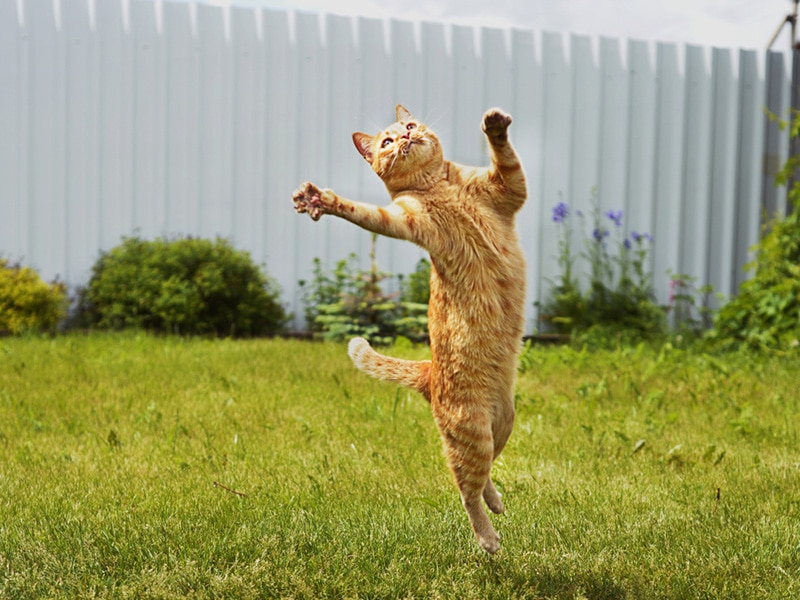Cats often do funny and entertaining things that make us laugh. There are plenty of videos and memes on the Internet that show cats doing something wild or unexpected. You can even find some videos of cats that look like they’re dancing or bobbing their heads to music. While it’s unclear if cats dance to music with awareness, research shows that cats can recognize music and have their moods affected by music.1
Cats may not be able to learn a full dance routine, but you can teach them some tricks that mimic dance moves. If you like dancing, teaching your cat some moves can be a fun endeavor, and you two can enjoy dancing together.
Cats, Music, and Dancing
Cats have powerful ears that are designed to help them catch small prey. Their ears can detect pitches that are about two octaves higher than what humans can hear.2 They rely on their ears to navigate the world, and they’re also able to detect music and songs. However, they don’t seem to like the same kinds of songs that humans do.
A 2015 study published in Applied Animal Behavior Science hypothesized that cats would respond to “species-appropriate music” that has elements that align with how cats communicate.3 To test this hypothesis, researchers created songs with sounds and pitches that would appeal to cats. These songs had high-pitched tones and sounds similar to birds chirping and mice squeaking. They compared multiple cats’ reactions to these songs and Bach’s Air on a G String and Gabriel Faure’s Elegie. Most cats reacted to the species-appropriate music but didn’t show any reactions to the human songs.
This research shows that cats can respond to certain songs and sounds. However, it doesn’t explain videos that capture cats singing or dancing to songs on the radio. Cats won’t be able to explain this phenomenon verbally, but we can guess that they might be responding to certain pitches they hear in a song. Most of these videos also aren’t filmed in controlled locations, so there’s always the chance that there can also be other factors that can make it look like cats dance to music.

How to Teach Your Cat to Dance
While your cat may not know how to dance to the beat, you can teach them to bust out a dance move when a song comes on. All you need is a cat toy and your cat’s favorite treats. Start by dangling the toy in front of your cat and encouraging them to swat or bat it. Reward your cat with a treat as soon as they swing their paw at the toy. Continue to repeat this until your cat learns to bat at the toy immediately when it’s in front of them.
Once your cat learns to swing their paws consistently, you can start playing a song any time you want your cat to move their paws around. Continue to reward your cat with treats so that your cat learns that they get a treat every time they swing their paws when the song plays. It may take several weeks to teach your cat this trick, but with some time, your cat will start to associate the song with the motion.
Conclusion
Research shows that cats will react to songs containing sounds and pitches that their ears are naturally inclined to listen for. These types of songs may cause them to move around and look like they’re dancing. Even if your cat doesn’t particularly react to music, you can still train them to “dance.” With some time, patience, and treats, you can teach your cat a new trick and have a dance party with them whenever your favorite song starts playing.
See also:
- Cat Sìth: The “King of Cats” From Celtic Mythology
- Why Do Cats Blink Slowly? Their Behavior Explained
Featured Image Credit: Anastasija Kru, Shutterstock








